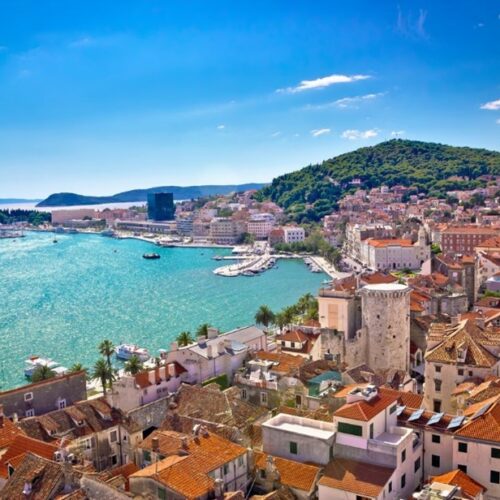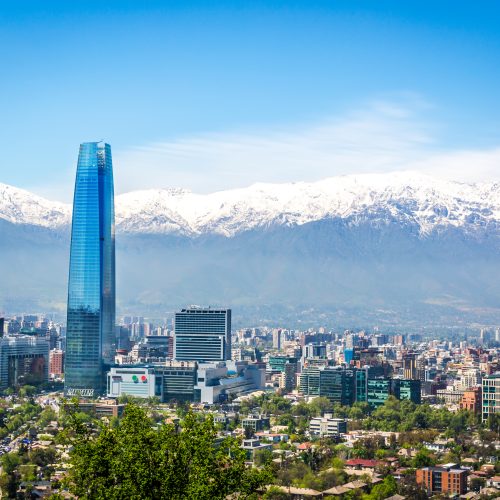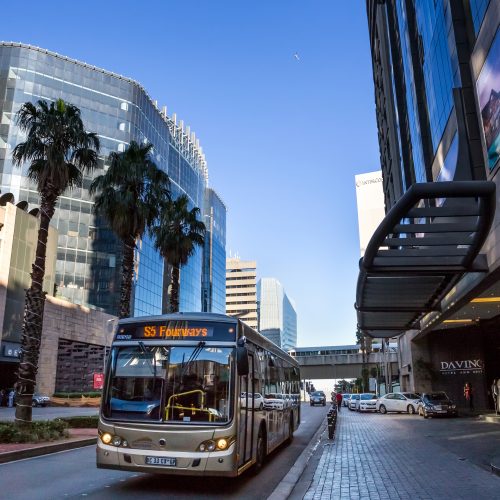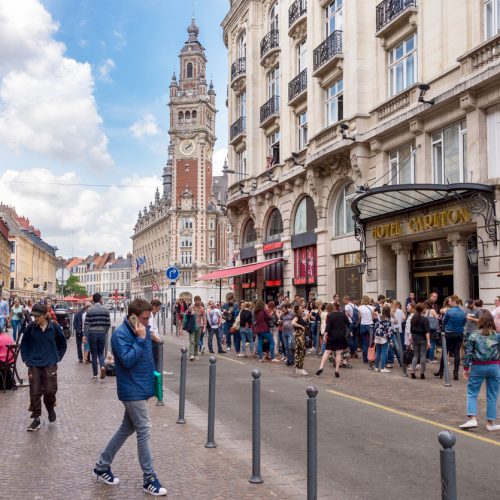Context and policy overview
Rio de Janeiro, Brazil’s second-largest city, has long been challenged by natural disasters. Between 1990 and 2010, the city was seriously damaged by recurrent landslides and mudslides caused by summer rainstorms.[1] The citizens hit hardest by the disasters were mostly the poor living in the city’s favelas.
In 2010, an unprecedented flood claimed the lives of numerous citizens and deprived more than 15,000 people of their homes.[2] The tragedy drove Mayor Eduardo Paes and his team to overhaul the city’s emergency response operations. One pillar of the strategy focused on incorporating improved data and information and communications technology (ICT) into existing city infrastructure, while a second focused on policy coordination between government departments.
Creating a welcoming and safe environment for residents and visitors became increasingly important with the 2014 World Cup and 2016 Olympics on the horizon. With the support of IBM and other companies, the city established the Rio Operations Centre in 2010 and began to use it to develop real-time data on transport, weather and other topics associated with citizens’ daily lives.
Implementation
Built from scratch in just eight months in collaboration with IBM and Oracle, city decision-makers use the Operations Centre ‒ a “state-of-the-art situation room” ‒ for everyday city management, especially emergency response.[3] Garbage trucks are coordinated by GPS, for instance, so that they can be redirected to other tasks in an emergency. This helps the city efficiently manage resources and improve response times.
Under a public-private partnership (PPP) model, IBM provided the lion’s share of the financing for the centre ‒ US$ 14 million[4] ‒ as a proof-of-concept investment and the city government stumped up around US$ 9 million.[5] The two then continued their partnership by way of a service contract, with IBM supporting the system.
There are three essential structural components to the Rio Operations Centre setup that enable the centre to respond to incidents and manage information:
- Organisational structure
The Rio Operations Centre is divided into four branches – operations, technology, infrastructure and resilience – under the leadership of the chief operating and resilience officer, who reports to the mayor:[6]
The operations branch acts as the backbone of the entire centre and coordinates city representatives from different departments. In a control room equipped with a video wall, staff can consult real-time data transmitted from sensors, cameras, bus GPS and other sources through a 30 kilometre (km) fibre-optic cable.[7]
The technology branch supports the centre’s technical development. With the involvement of private companies, it constructed a platform called Geoportal, which aggregates data across the city.
The infrastructure branch maintains the equipment and infrastructure that enables the centre to operate. Around 500 people work shifts at the centre, which runs 24/7.
The resilience branch aims to strengthen the city’s resilience to climate change and help its regular activities recover more efficiently from incidents by drawing on historical incidence and disaster data.
- Incident response
When the monitoring system identifies an incident, the operations branch first classifies its intensity and urgency based on a traffic-light system: normal (green), warning (yellow) and crisis (red).[8] Examples of the factors considered include the location of the incident, the expected response time and the number of casualties. The chief executive officer of the Operations Centre can then notify and dispatch a field team to tackle the problem depending on its critical level, while the centre continues to monitor and reassess the incident. Once the situation is resolved, the field team is deactivated and corresponding reports are sent to the Operations Centre (Figure 16)
Figure 1. Operations Centre incident response Source: Schreiner (2016)[9]
3. Information flow
The task of coordinating the collaboration of multiple agencies has required the Rio Operations Centre to re-evaluate and reform its procedures to improve information flows, which are fundamental to the success of government efficiency. To maintain a highly efficient information management system, the city has put in place four steps:
- Step 1: data input
Data are collected from different sources across the city. In addition to sensors, cameras, GPS technology and other municipal systems that collect geo-referenced data, city concessionaires can transmit images and videos to the Operations Centre.[10] Citywide cameras and sensors were installed incrementally; more than 1,000 cameras and 15,000 sensors were in operation as of 2015. The city also encourages its citizens to use an app named Waze to share real-time traffic data with the Operations Centre[11] to complement the images captured by the municipal digital infrastructure.
To manage all of these data more efficiently, the Operations Centre developed a Geoportal platform, which aggregates data in different formats (such as XML, JSON, KML, GeoJSON) through various protocols (FTP, SOAP and Rest).[12] It analyses data features and attributes and puts similar data types into the same thematic layer. To date, the platform has created 250 thematic layers encompassing topics such as traffic, transport and weather forecasts.[13]
The platform connects data from various sources and displays the information on one interface based on open standards and rules. Staff can use the interface to monitor real-time information and concurrently control various functions.
Taking traffic management as an example, the geoportal platform has the following features:[14]
Traffic monitoring: an interactive chart that lists all heavy traffic congestion in the city
Waze gallery: photos of traffic accidents, geo-referenced and dated, uploaded by city residents, which Operations Centre staff can consult
traffic hot spots: a map to pinpoint roads and intersections that receive the most complaints
data mining: a set of parameters allowing the Operations Centre to analyse data collected in a selected area
dashboard: a system to integrate data received from places other than sensors and cameras and to create charts for quick reference.
- Step 2: response actions
This stage involves multi-agency coordination and support, analysis and management of incidents, intelligent use of the video surveillance system, development of standard operating procedures and communication with field teams. To manage the large amount of real-time data, the technology branch incorporated two subsystems into the geoportal platform:[15]
The JEAP system allows different municipal departments to provide information on what is happening in the city. For instance, ahead of an event, departments that issue event permits can communicate essential information for evaluation and approval.
The COMMAND system allows different municipal departments to co-create standard operating procedures for different types of incident. When an incident occurs, the Operations Centre can assign tasks to the departments in charge and share information with teams dispatched to the site of the incident.
- Step 3: dissemination and communication of information
The Rio Operations Centre has its own press office to coordinate communications with the media. The press office maintains a close and transparent relationship with journalists and provides first-hand information on city operations.[16] This relationship has ensured that alerts and guidance published by the city government reach citizens quickly when an incident occurs. The centre frequently communicates with citizens through social media, too. It updates on road construction, weather conditions and traffic incidents on Twitter and Facebook, for instance. As of 2016, more than 320,000 people followed the centre’s social-media accounts.[17] A potential application of this is to perform social sentiment analysis using Tweets and combine it with geotagged images, sensor data or satellite imagery to develop real-time disaster services.[18]
Another channel of communication is Rio 1746. Through this hotline, citizens can report problems, file complaints about city services, place requests and obtain travel information, among other features.[19] One of the key benefits of the hotline centre is that it has enabled the unification of a number of different services and establishes a minimum acceptable response time for different requests. By bringing together a previously dispersed set of government services, citizens can use the hotline as a one-stop shop for public service support. The work of municipal agencies can also be reduced, as they have a clearer structure and more transparent system for handling requests. Today, the hotline handles roughly 600,000 calls a month. [20]
- Step 4: operational intelligence
All data on historical incidents are stored in a database, enabling the resilience branch to use big data to optimise operating procedures and minimise reaction times to similar situations. This stage involves the analysis of data correlation, procedural improvements, the upgrade of public services, knowledge and experience sharing among agencies and the provision of studies and projections to help allay the impact of adverse conditions on the city.
Barriers and factors critical to success
Public administration
Establishing the Operations Centre entailed not only technical expertise, but also changes in policy to mobilise both financial and human resources. To achieve this, the municipal government restructured its finances and regulations, forging strategic partnerships with different agencies at city and national level.
- Fiscal reform
The city’s previous budget could not meet its operational needs and was not sustainable. Mayor Paes cut the city budget by 20 per cent and renegotiated contracts with all city concessionaires.[21] This streamlined the city’s operations and prepared the ground for the investments brought about by the World Cup and Olympic Games. This re-focusing also allowed the city to operate more effectively.
- Restructure regulatory framework
Even though around 35 per cent of investments in Rio at the time happened through the private sector, the concept of PPPs was relatively new.[22] To facilitate PPPs, the municipality restructured its policy mechanisms and urban regulations, as PPPs had previously been extremely difficult to execute due to bureaucratic barriers.[23] This helped the city to accommodate the private investment underpinning local development.
- Cross-departmental partnerships
Bringing multiple departments together marked a turning point in the city’s operations. Previously, city departments had tended to confront problems single-handedly; they had worked in silos towards individual goals. The Operations Centre coordinated city staff from more than 30 municipal departments from transport and emergency services to weather forecasting. Staff in charge of different services underwent regular training drills to improve their ability to respond to incidents.
The Mayor’s leadership played a significant role in facilitating this new way of working. He provided clear executive orders and built close relationships with Operations Centre staff, using messaging apps such as WhatsApp to communicate efficiently.[24]
The Operations Centre also partnered with the Centre for Integrated Command and Control (CICC),[25] a national operations centre responsible for public security. This strategic partnership enabled the Rio Operations Centre to better coordinate municipal emergency services during major events by making use of the CICC’s employment roster, encompassing military police, ambulances, fire and emergency civil defence.
Results and lessons learned
The Rio Operations Centre enhanced the city’s operational capability significantly. In terms of natural disaster prevention, the city could forecast heavy rainfall as early as 48 hours in advance.[26] In addition, response times to traffic incidents were reduced by 30 per cent[27] and the time to resolve a reported problem was cut from five hours to 45 minutes.[28] These achievements won Rio de Janeiro the 2013 Smart City Award.[29] The city was also selected as one of “100 Resilient Cities” by the Rockefeller Foundation the following year, garnering positive media attention.[30]
Cities interested in enhancing their operational capability can learn from Rio de Janeiro’s experience:
- PPPs help to liberate cities from financial constraints, enabling them to embark on costly innovation.
- For an initiative as broad-based as the Rio Operations Centre, it is important to clarify different stakeholders’ roles and responsibilities.
- Strong leadership, a clear chain of command and strategic partnership are three enablers in an initiative that requires cross-departmental collaboration.
- As data provided by departments and concessionaires come in various formats, it is indispensable to embed a platform or a system that streamlines information management.
- Geo-referencing data allowed the Operations Centre to quickly assess incidents and mobilise all resources needed.
- Effective communication with citizens is vital. It allows the information to be transmitted in two ways, benefitting both the city and its citizens.
- In 2020, extreme natural disasters took a heavy toll on Rio de Janeiro, despite the Operations Centre. Some improvements could be made to avoid such tragedy, such as enforcing stricter regulations on the urban development of disaster-prone areas and putting in place evacuation plans and an emergency alert system.
Cities must ensure that their operations centre functions when natural disasters strike. For instance, such centres will not work in an emergency if they are located in a disaster-prone area.


















